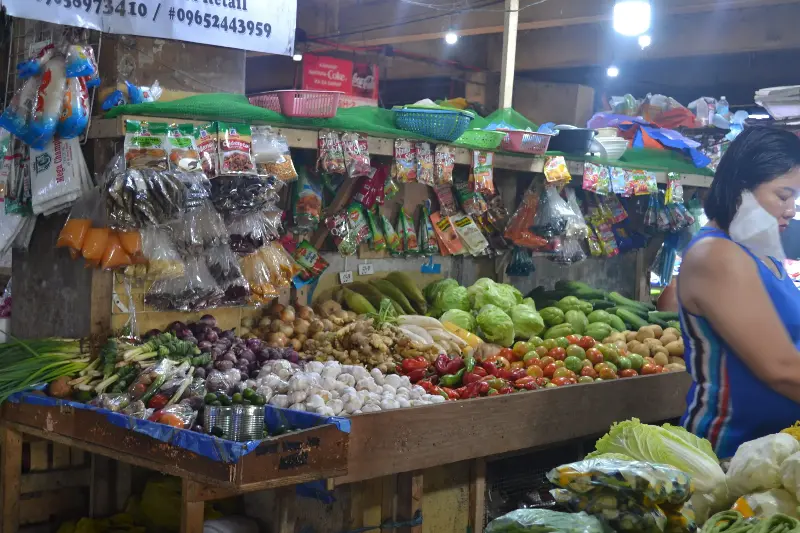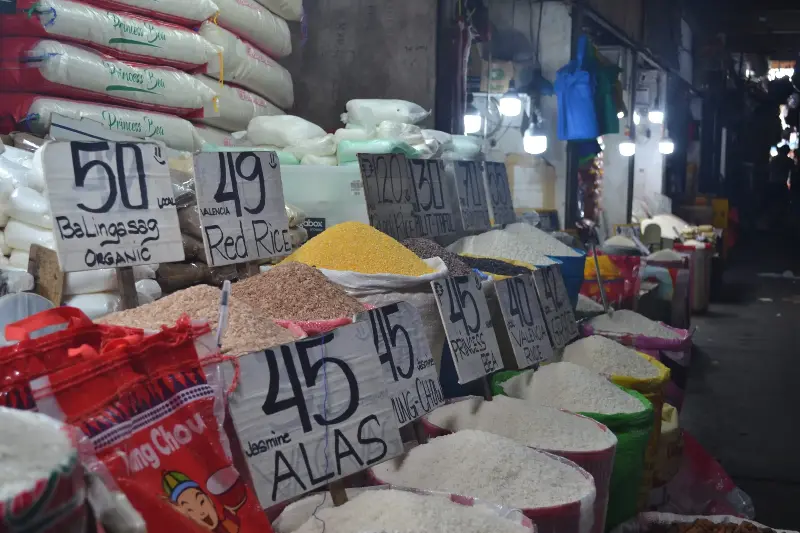By Eman D. Pangcatan
MSU Intern
A kilo of onions at Cogon Market in Cagayan de Oro City now costs more than a ride home. A bundle of pechay can swing from piso-presyo to panghanda, depending on the weather.
Welcome to the daily gamble of Cogon Market — where every price tells a story and every vegetable reflects a mix of sun, storm and supply.
On any given morning, the market hums with the scent of fresh produce and the rhythm of haggling. But behind the noise lies a complex exchange between farmers, vendors and consumers — all navigating rising costs, unpredictable supply chains, and climate shifts, under the watchful eye of the Department of Trade and Industry (DTI).
Vegetables: Daily essentials with unstable tags
Vegetables are a staple in Filipino households, but at Cogon, their prices are anything but stable.
As of this week, a kilo of onions sells for P180, garlic for P170, and labuyo for P150. Carrots and tomatoes are priced at P70, while potatoes go for P80. Leafy greens like pechay and kangkong range from P10 to P40 per bundle, depending on size and quality.

“Dili tanan gulay mu survive sa kainit o katugnaw,” said one vendor, pointing to climate as a major driver of price fluctuations.
Vegetables such as onions and leafy greens are particularly sensitive to heat and cold. Spices remain more stable, typically selling for P5 to P10.
Rice prices: A broad spectrum
At Cogon, rice — the Filipino staple — spans a wide price range.
Ordinary broken rice is priced at P38 per kilo, while premium varieties like Pure Pilit Tapol reach P130/kg. Other common types include Valencia (P43), Sinandomeng (P44), and Pure Jasmine (P48).

To help control inflation, the Department of Agriculture imposed a P49/kg maximum suggested retail price (MSRP) on imported rice beginning March 1, 2025.
Despite that, Cagayan de Oro’s average price for imported rice was still lower at P46.15/kg as of mid-March. Local rice, which is not under MSRP regulations, follows market demand.
Meat, fish and other basics
Beyond rice and vegetables, Cogon offers a full market basket.
Poultry sells for P210/kg, pork liempo for P350, and beef ranges from P320 (ribs) to P450 (sirloin). Fish, depending on catch and season, costs between P160 to P280/kg. Eggs range from P6 to P10 apiece, or P195 to P285 per tray.
Fruits typically go for P90 to P100/kg, while cooking oil prices range from P45 to P180 per liter.
Most Cogon vendors are retailers who apply a markup of P5 to P15 per item to cover transport and basic earnings.
“Ang presyo, mu-depende sa among palit sa supplier. Kung taas ang kuha, taas pud ang baligya,” one seller said.
DTI monitoring and market dynamics
DTI-10 regularly monitors market prices to ensure they remain within suggested retail price guidelines — particularly for goods covered under SRP.
However, local rice and most vegetables are excluded from these controls, leaving their prices vulnerable to seasonal supply and wholesale fluctuations.
DTI’s list of basic necessities and prime commodities as of February 2025 is available online for public reference.
In Cogon, what you pay at the stall is more than just a number — it’s a reflection of farm conditions, climate impacts, transportation costs, and everyday survival.
As prices continue to shift, both buyers and sellers rely on awareness and adaptability to keep the city’s oldest public market resilient and thriving.
